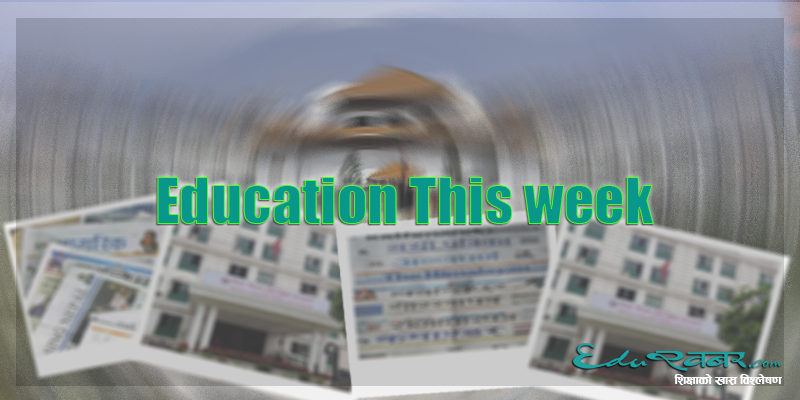
|
Abbreviations: MOEST- Ministry of Education, Science and Technology, TUSC-TU Service Commission, KD-Kantipur Daily, THT- The Himalayan Times, , SEE- Secondary Education Examination |
- The Office of the Controller of Examinations on Thursday published the results of Secondary Education Examination-2019 in letter grading system. The exams were held in March-April. A total of 459,275 students — 449,642 from academic and 9,633 from technical schools — had taken the exams under regular category. Under the Grade Point Average system, only 2,792 students from community schools scored Grade A-plus (GPA 3.60 to 4), while 14,788 students of private schools scored the Grade A plus. The Office of the Controller of Examinations today published the results of Grade X, also called Secondary Education Examination-2019, in letter grading system. The exams were held in March/April. Total number of students securing A-plus accounts for 3.8 per cent, compared to 3.06per cent last year. Only 133 students from private school scored Grade D (GPA 0.80 to 1.20), while 4,296students from community schools scored the Grade D. Three times more students took exams from community schools then from private schools. Secretary at Ministry of Education, Science and Technology said thatthe results were not satisfactory given the investment by all three tiers of governmentsand the public in school education.
- Article about international innovation in education was covered in the media this week. An article shared examples of school that were built into communityand innovative school practices without books. The West Philadelphia School of the Future does not require students to have books.Instead, students use computers. A note-taking app, OneNote, is used to teachmathematics. Each class has computerized smart boards instead of traditional boards. Digital lockers in the school open with the flash of an IDcard. The school was opened in 2006.The students and teachers faced several challenges soon after the school opened.Students were not yet technically ready to jump in the deep end of going digital. Theteachers also had problems with incorporating the desired level of technology. But nowthe school is running successfully and students score high marks in mathematics andreading. School on wheels is another example shared in the media this week.A governmental organization in Karachi, Pakistan, launched its first mobile schoolwhen it bought a bus in 1993 for the purpose. The foundation aims to educate childrenin slum areas in the port city of Karachi. Equipped with benches, desks and a largeblackboard, the bus picks up children from different areas of the city. As many as 160students study inside the bus in four shifts of two hours each. A teacher and a teaching assistant teach the students thebasics of reading and writing. And each student is taught on an individual basis.
This example can be of relevance for local governments to experiment with different innovative approaches to reaching out of school children based on the local context of the municipality. Since local governments are independent to approach school education, different innovative approaches could be planned for addressing the contextual need of the society and families in the municipality. The separate innovation in education department could be formed at provincial or federal level for research and development to identify and experiment on such innovative practices to ensure access to schools and education.
- BP Koirala Institute of Health Sciences was reported to be padlocked over foreign student quota this week. Residential doctors at BPKIHS, who have accused the institute of allocating higher quota for foreign students aspiring for medical studies, padlocked the offices of the vice-chancellor and rector today. Alleging that the quota that the institute had set aside for foreign students interested in being enrolled in the MD and MS programs was higher than provisioned by the National Medical Act, Junior Resident Welfare Society padlocked the offices of VC and Rector of the institution. The society also padlocked the main gate and staged a sit-in. Govinda KC, a senior orthopaedic surgeon at Tribhuvan University Teaching Hospital, also issued a press statement today expressing concern about allocation of more seats to foreign students for MD and MS programs at BP Koirala Institute of Health Sciences, Dharan.

Students of DhurbaJyoti Secondary School of Kali Gandaki Rural Municipality processing vegetables produced in the premise of the school to send it in the market. June 28_KD
प्रतिक्रिया